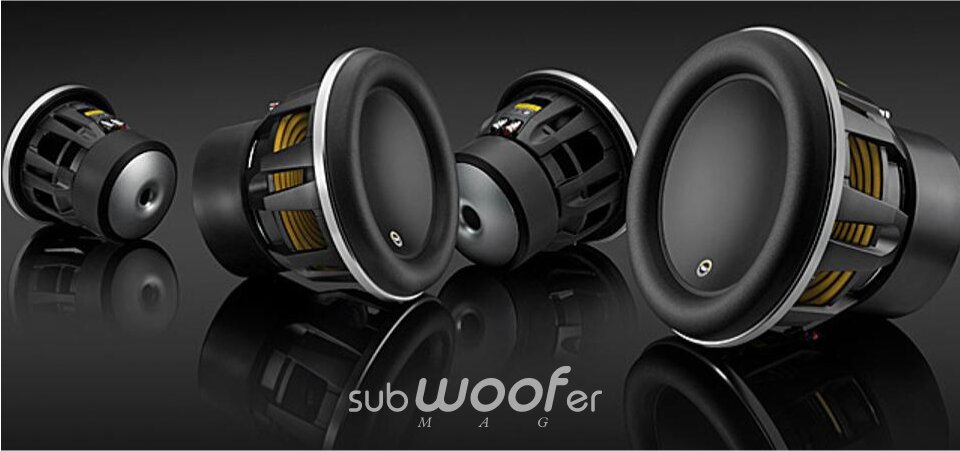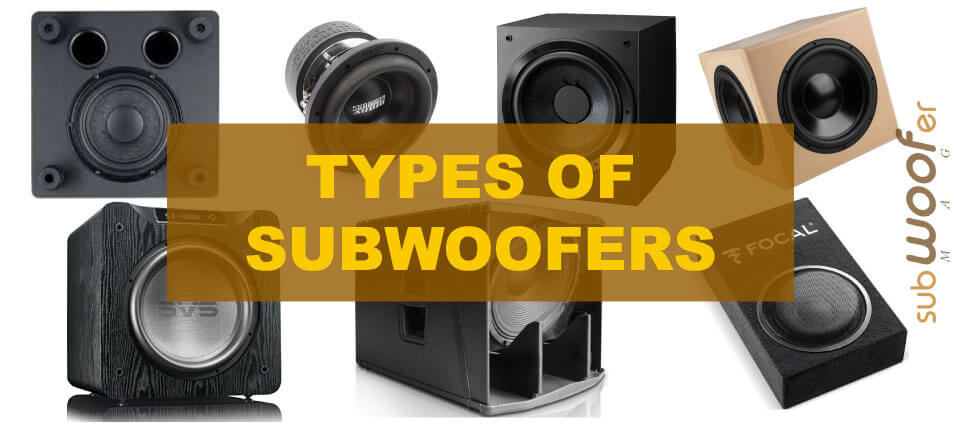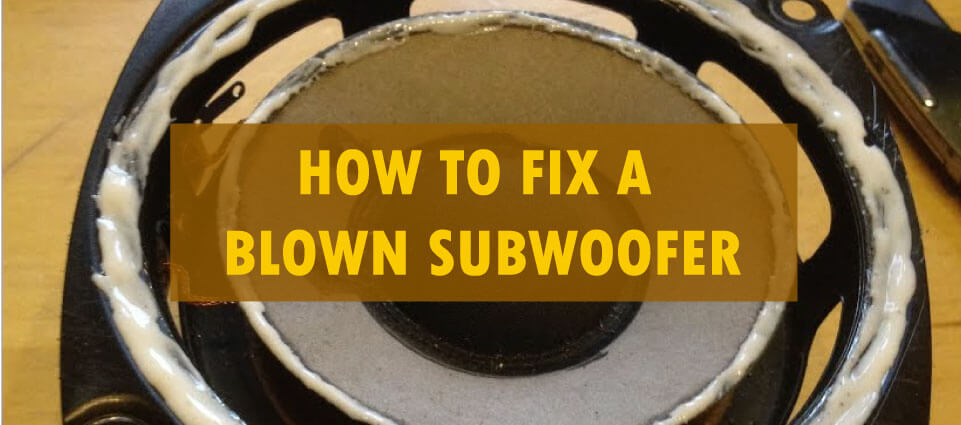Table of Contents
What are subwoofers?

The question arises before choosing a subwoofer for your home theater or car stereo system that what are subwoofers, the answer is A subwoofer is actually a speaker or loudspeaker, used to produce low-pitched frequencies; these frequencies may vary from 20 Hz to 200 Hz in particular.
Those low-pitched frequencies are often called bass. A subwoofer helps loudspeakers to enhance their low-frequency ranges to produce quality sound. Bass is the very low frequency produced by various musical instruments, explosions in a movie, and natural environmental sound effects.
A subwoofer consists of a cabinet or enclosure usually made up of heavy wood called MDF (medium-density fiberboard), a driver, may or may not an amplifier and a port or vent. A port or vent in the subwoofer cabinet is used to limit distortion and unwanted noises.
The subwoofer comes with a built-in amplifier called an active subwoofer, and as such, it can utilize no further external power source to power it. By contrast, the subwoofer that does not come with its own amplifier is known as a passive subwoofer.
A subwoofer’s frequency ranges typically range from 20 Hz to 200 Hz. This range is commonly used for home theaters and car stereo speakers. The frequencies below 100 Hz are used for specialized sound systems. There are also audio systems that work at lower than 80 Hz; these are often THX-approved systems.
Typically, an amplifier may be required to be powered with up to 1000 watts of dynamic power, it may range from 50 to 1000 watts depending on the voltage the subwoofer uses. This subwoofer needs low pass frequency inputs to work properly. The subwoofer may have an impedance ranging from 4 ohms to 8 ohms.
How Does a Subwoofer Work?
The subwoofers are used to reproduce low-pitched frequencies using a bigger woofer/driver which does the work pairing with an amplifier.
When you connect your subwoofer to an audio receiver. The receiver sends low-frequency effects (LFE) audio signals to the subwoofer via the current. The amplifier then treats the current and converts it into sound using a magnetic voice coil.
The magnetic coil helps the cone to vibrate and produces high-quality deep or less deep sound. It depends on the size of the subwoofer that how much bass it would produce. The cone also has a dust cap. This cap prevents the cone from being impacted by dust particles entering the cone’s area. So that it can not degrade the performance of the subwoofer. By blending these sound signals with air, low-pitched deep frequencies are reproduced.
what makes a subwoofer good?
What makes a subwoofer good is its ability to reproduce low frequencies. A quality subwoofer should sound realistic and not just produce booming bass. The better the bass is, the better the subwoofer is. Quality bass can be achieved by a subwoofer using a combination of factors, not just one factor.
Also read difference between woofer and subwoofer:
Why do you need one?
Subwoofers are used to reproduce deep bass. One can say that my regular bookshelf speakers are capable enough to reproduce enough bass I want. Alright, the bookshelf speakers can reproduce enough bass. But is that bass enough to listen to low-pitched organ music that can go as low as 16 Hz, or the bookshelf speakers are capable enough to handle the sound produced as a result of explosions in an action-packed thriller movie? The answer would obviously be a NO.
Now the thing is if you are satisfied with the bass your bookshelf speakers are producing. You do not need a subwoofer, but if you want a robust experience and you are a bass enthusiast, you can definitely consider using a subwoofer to enhance your music and movie-watching experience.
Read for Best subwoofer under $300 here:
Should I get more than one subwoofer?
As we discussed earlier, doubling the number of subs does not necessarily mean doubling the volume/sound. But you might still want to increase the number of subs to have some extra bass. Our suggestion is still to start with one, then if you have a budget and enough space to put it in, you can definitely add one more into your system. It will somehow enhance your experience positively.
The components of a Subwoofer:
The subwoofer enclosure or cabinet consists of a driver/speaker, these drivers may vary from 4 inches to 21 inches. The 4 inches drivers are normally used on computer audio systems. 8 inches to 15 inches for small to medium size rooms. Moreover the drivers larger than 15 inches to 21 inches are used outside, in clubs, in live concerts where high output is required from the subwoofer.
Essentially, the driver consists of a basket that houses every component necessary for it to be operated. Inside the basket, there is a voice coil, a cone or diaphragm and a magnet.
Since we mentioned earlier that a subwoofer cabinet may or may not include a built-in amplifier. An active subwoofer is one that comes with such an amplifier and is usually used in home theaters and car stereo speakers. The other one that does not come with a built-in amplifier is a passive subwoofer usually used in clubs or concerts.
Different types of subwoofers:
Subwoofers typically come in two types, active and passive subwoofers which we have already discussed before. Based on their functionalities and features, we can further divide subs into some more types. These are mentioned below:
- Active subwoofer
- Passive subwoofer
- Ported Subwoofers
- Sealed Cabinet
- Passive Radiator
- Front and Down Firing Types of Subwoofers
- Bandpass Subwoofers
- Horn Loaded Subwoofer
Read more about types of subwoofers here:
Myths about subwoofers:
The subwoofers are used to enhance your home theater or car audio systems to add some extra deep bass but there are some common myths about subwoofers that we are going to discuss here.
1- Subwoofers are only best for movies and not for music:
Do you also believe that a subwoofer is only good for movie sound and is not suitable for music? Let me burst that bubble for you. Undoubtedly, there can be subwoofers that are bad for music, but at the same time, it may also be possible to find some really good ones that deliver the best experience for music. Click here to read out about the best subwoofer for music only.
2- doubles the subwoofer, doubles the volume:
When you have a subwoofer and you want to add another one, you are not doubling your sound/volume, so, am I just doubling the count of my subwoofers? Fortunately NO. Read more about this myth here:
3- Smaller subs sound better than big ones:
Another popular myth about the subwoofers is that the smaller subs perform and sound better than the bigger size subwoofers. Well, that is not the case at all. Back in the days when technology was not that advanced. The bigger subs were struggling to move the diaphragm back and forth very quickly because of their bigger size.
On the other hand, smaller subs used to move quickly thanks to their smaller mechanism. But now, with the advancement of technology, the magnets, the coils, spiders, cones all are much advanced to kill this myth easily.
Read more here Myths about Subwoofers:
Hi, this is Ali. I have been an enthusiast of speakers especially subwoofers. So, I am finally going to throw my experience out for you guys.





